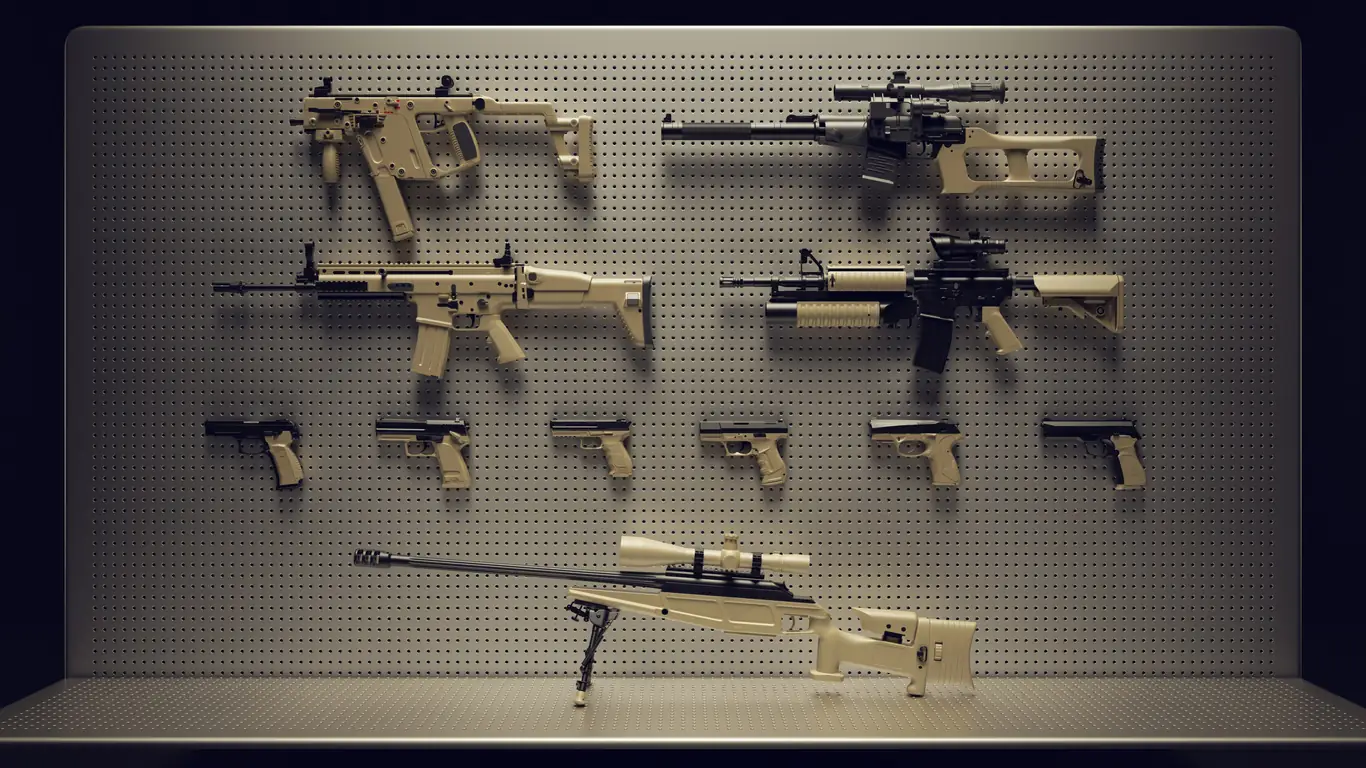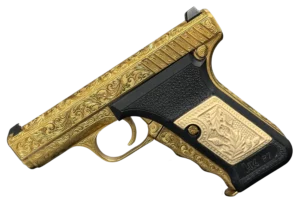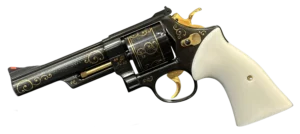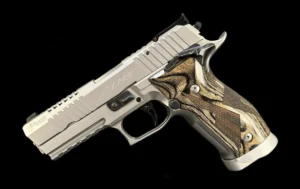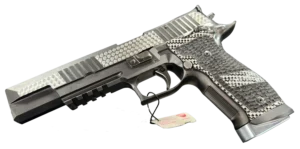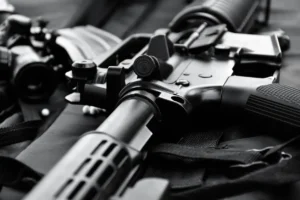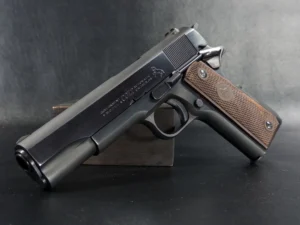Key Takeaways:
- Know the rules before you collect — not after: Federal laws are just the start. State laws, international regs, and ATF red tape can trip you up fast if you’re not paying attention.
- A Federal Firearms License (FFL) isn’t just for dealers: If you’re serious about collecting — especially curios, relics, or anything crossing state lines — a Type 03 FFL can save you time, money, and legal headaches.
- Your paper trail is your safety net: Keep detailed records of every firearm you own — where it came from, who you got it from, and what’s been done to it. Trust me, future you (and maybe your lawyer) will thank you.
Because this passion comes with paperwork — and plenty of it.
Let’s just call it what it is: Collecting firearms is not a low-effort hobby. It’s an obsession. A beautiful, chaotic, sometimes-expensive love affair with history, mechanics, and the stories that steel can hold. Every piece has a past. Some saw action. Others were ceremonial. Some just sat in a drawer until someone like you found them and gave them the respect they deserved.
But here’s where things get tricky — and fast. The moment you move from admiring to acquiring, you hit a wall of red tape. Cross a state line? That’s one set of laws. Import from Europe? Another. Even buying something down the road might land you in legal hot water if you skip a few steps.
So let’s slow things down and walk through it. This isn’t legal advice — that’s what lawyers are for — but it’s the hard-earned wisdom of people who’ve been there, done that, and managed to keep their collections (and records) intact.
Ready to get your bearings? Good. Let’s dive in.
The Legal Landscape: A Patchwork Quilt Held Together With Acronyms
Before you start buying up Garands and Mausers, you need to understand the playing field. Gun laws in the U.S. are layered like a lasagna. You’ve got:
- Federal laws, which apply coast to coast
- State laws, which can flip completely when you cross a border
- Local ordinances, which can throw in curveballs to keep things spicy
- International laws, if you’re dreaming beyond U.S. borders
None of it is simple. But it’s manageable — if you pay attention.
The Big Four Federal Laws You Need to Know
Let’s start with the foundation. There are a few federal laws that shape just about everything collectors deal with:
1. Gun Control Act of 1968 (GCA)
The backbone of modern firearm regulation. This law established licensing requirements for dealers, set the stage for federal oversight of interstate firearm commerce, and restricted ownership for specific individuals (like felons or those with restraining orders).
2. National Firearms Act (NFA, 1934)
Want to collect something exotic — like a short-barreled rifle, a full-auto MG42, or a suppressor? This is your law. The NFA imposes extra paperwork, fingerprinting, a $200 tax stamp per item, and a long wait (like, months).
“Effective January 1, 2026, the $200 tax stamp required for suppressors, short-barreled rifles (SBRs), and short-barreled shotguns (SBSs) will be eliminated. While the tax is being removed, other NFA requirements like registration, background checks, and CLEO notification remain in place.”
3. Firearm Owners Protection Act (FOPA, 1986)
FOPA made some significant changes to earlier laws — including limiting the ATF’s ability to randomly inspect FFL holders and creating limited protections for lawful gun owners traveling through anti-gun states. It also banned civilian sales of new machine guns post-1986. If it wasn’t made and registered before May 19, 1986, you’re out of luck.
4. Brady Handgun Violence Prevention Act (1993)
This is the one that gave us the National Instant Criminal Background Check System (NICS). If you’re buying from a dealer, you’re probably going through a NICS check — unless your state has its system (some do).
So… Federal Laws? Not the Whole Story.
Federal laws set the stage, sure. But the moment you try actually to buy something — especially from another state — you’re in state-law territory. And this is where things get complicated, really fast.
State Laws: Where the Rules Change Block by Block
Every state writes its gun laws. Some mimic federal law almost exactly. Others go way beyond.
Common Variations:
- Permit-to-purchase requirements: In some states, you can’t even start shopping without a permit (e.g., Illinois).
- Waiting periods: California says you’ve got to wait 10 days. Other places? Walk out the same day.
- Magazine capacity limits: 10 rounds. 15 rounds. No limits. It all depends.
- Assault weapon bans: Definitions vary wildly. A threaded barrel in one state is no big deal — in another, it’s a felony.
- Transport laws: Some states require firearms to be unloaded and locked separately from ammo, even if you’re just driving through.
If you’re crossing state lines with a firearm — or buying one that has to cross — you need to know the laws on both ends. Not just “is it legal to own,” but “is it legal to buy, transport, receive, and store?” All of it matters.
Moving? That’s a Whole Different Can of Worms
Here’s something not enough people talk about: moving your collection to a new state.
Let’s say you’re relocating from Texas to New York. In Texas, your suppressors, 30-round mags, and AR-15s with forward grips are fine. In New York? That’s contraband.
You’ll either need to sell, modify, register, or surrender certain items before the move. And if you don’t? You could find yourself explaining your collection to a judge.
Moral of the story? If you’re planning a move — even temporarily — research the state’s laws. Not just the ones today, but what’s been proposed for tomorrow. Things change.
The Role of the ATF: Watchful Eyes and Paper Trails
You’ll hear a lot about the Bureau of Alcohol, Tobacco, Firearms, and Explosives (ATF) in the gun collecting world — usually with a heavy sigh attached.
They’re the enforcers of most federal firearms regulations. That means they:
- Approve or deny FFL applications
- Handle NFA item transfers
- Run inspections on licensed dealers and collectors
- Approve Form 6 import applications (for bringing in guns from overseas)
They’re not your enemy — but they’re not exactly warm and fuzzy either. Dot your I’s. Cross your T’s. And whatever you do, don’t fudge the paperwork.
Federal Firearms Licenses (FFLs): Not Just for Gun Stores
Think FFLs are just for brick-and-mortar gun shops? Think again.
There are nine types of FFLs. The most relevant for collectors are:
- Type 01 (Dealer in firearms): This lets you engage in sales, gunsmithing, and transfers — not just for personal collection, but for business.
- Type 03 (Collector of Curios & Relics): This one’s tailor-made for serious collectors. It lets you buy C&R firearms from other states (and sometimes other countries) and have them shipped directly to you. No local FFL needed. No middleman markup.
If you’re primarily into older guns — WWI bolt actions, Cold War pistols, that sort of thing — this license is a game-changer. But even the C&R license comes with responsibilities: you’ll need to maintain a bound book (a running record of your acquisitions and dispositions), and you may get inspected.
So, How Does This Work Across State Lines?
Let’s walk through a basic example.
You are in Ohio and find a beautiful pistol for sale by a private seller in Arizona. It is not an antique, nor is it a C&R item; it is simply a modern firearm that you would love to add to your collection.
Here’s what needs to happen:
- You contact the seller.
- You give them the name and address of an FFL dealer in Ohio.
- They ship the firearm to that FFL.
- You go to the FFL, fill out a Form 4473.
- You undergo a background check.
- You pay the transfer fee.
- You wait (if required).
- You take it home.
That’s the legal way. Anything else? Risky — and potentially illegal.
Even with a C&R license, you can’t just start buying modern handguns across state lines and having them shipped to your door. It’s not worth the gamble.
International Collection: The Deep End
Let’s say your collecting tastes start to wander abroad. Maybe you’re eyeing up a Swiss K31, a British L42A1, or a Japanese Arisaka with all the matching parts.
Can you import it? Yes. But not without jumping through some hoops.
Importing Firearms into the U.S.
Here’s what you need:
- ATF Form 6: This is the official application to import firearms or ammunition.
- An import license: Depending on what you’re bringing in and who’s doing the importing, this could be you or a licensed importer.
- Proof of eligibility and legality: Not all firearms can be imported — some are banned based on country of origin, configuration, or political bans.
Then there’s customs paperwork, shipping arrangements, and possibly translation of provenance documents if you want to preserve collector value.
Exporting Firearms from the U.S.
It gets even trickier here. Exporting firearms without the proper license can land you in very serious trouble. We’re talking felony charges and massive fines. You’ll need:
- Authorization under the Arms Export Control Act (AECA)
- Possibly an ITAR registration (depending on the situation)
- Paperwork filed with the State Department, not just the ATF
And don’t forget the foreign country’s import laws. Just because you’re cleared to export doesn’t mean they’re cleared to import.
Bottom line: if you’re getting serious about international collecting, talk to a lawyer or an experienced FFL who specializes in imports.
Antiques, Curios, and Relics: A Collector’s Playground
There’s a reason so many collectors fall in love with older guns. They’re gorgeous, storied, and — bonus — often easier to collect legally.
“Antique” Firearms
Defined by federal law as any firearm made on or before 1898, these guns are not considered firearms in the legal sense. That means:
- No background check
- No FFL transfer required
- You can often ship them directly
But not always. Some states still regulate them like modern guns. And if the firearm has been converted to fire modern ammunition, all bets are off.
Curios and Relics
C&R firearms are:
- Over 50 years old
- Of historical or collectible significance
- Or officially recognized by the ATF on their C&R list
You can collect these across state lines — if you have a Type 03 FFL. It’s one of the easiest licenses to get and makes collecting old guns way smoother.
Documentation: The Paper Trail That Saves You
Here’s something every collector learns the hard way: your records are your protection.
Make it a habit — from day one — to document everything. Every purchase, every trade, every transfer. Keep:
- Bills of sale
- Copies of FFL info (if applicable)
- Serial numbers
- Condition reports
- Provenance documentation
There are digital tools out there to help. Or go old school — a well-organized binder works too. But never rely on memory. It’s not just about resale — it’s about covering your backside if questions ever come up.
Storage, Display, and Transport: Looking Cool vs. Staying Legal
Look, we all want that dream gun room. Walnut walls. Velvet lighting. Rows of perfectly presented pieces.
But aesthetics mean nothing if your collection isn’t secure.
Storage
Invest in a good safe. Or several. Bonus if they’re fireproof and humidity-controlled.
Display
Wall mounts are great — if you live alone and never have guests. If not, get a locking case. Don’t tempt fate.
Transport
When you’re moving firearms:
- Unload them
- Use a locked case
- Store ammo separately
- Know the laws in every state you’re passing through
Even driving across the country with a boxed revolver can become a legal nightmare if you’re not careful.
Avoiding Trouble: Common Mistakes to Watch For
Let’s wrap this up with a few lessons people usually learn the hard way:
- Never assume what’s legal in your state is legal everywhere.
- Don’t skip paperwork — even for gifts or family trades.
- Keep your licenses and forms current.
- Don’t mess with NFA items unless you know exactly what you’re doing.
- Ask questions. Ask your FFL. Ask your lawyer. Just ask.
Final Thoughts: You’re Not Just Collecting Guns — You’re Collecting Stories
Every firearm has a past — and if you’re lucky, a future. Collecting legally might not be the sexiest part of the hobby, but it’s the one that keeps you in the game.
So take your time. Learn the rules. Build something that matters.
Because a good collection doesn’t just sit in a safe.
It tells a story.
And the best stories? They’re the ones you get to pass on.
Frequently Asked Questions
Not necessarily. If you’re buying locally and keeping it small, you might not need one. But if you’re collecting across state lines — or especially into curios and relics — a Type 03 FFL makes life a lot easier (and way more legal).
Only if it goes to a licensed dealer in your home state first can you order a gun like it’s a vintage watch off eBay. Federal law says it has to go through an FFL — you do the background check, then you get the gun.
Yes, kinda. If it was made before 1899 and hasn’t been modified to fire modern ammo, it’s considered an “antique” under federal law. That means fewer restrictions — but don’t assume your state feels the same way. Always double-check.
Sure — but not always easily. Some states ban guns or accessories that are perfectly legal in others—moving from Texas to California? You might have to sell or modify part of your collection. Know before you pack.
It’s possible — but complicated. Importing or exporting firearms involves paperwork, permits, and approval from the ATF and sometimes the State Department. If you’re serious about it, you’ll probably need help from a licensed importer.


